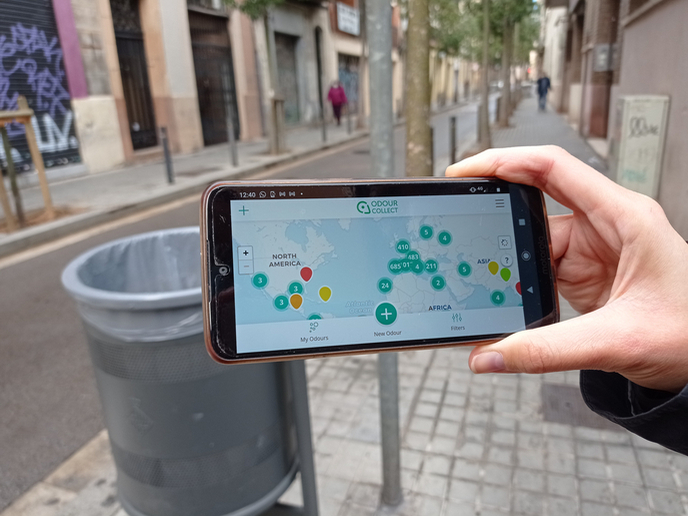Crowdsourced tools sniff out the location of nasty odours
Frequent exposure to odours, at home or at work, can cause a range of ailments, including: headaches, lack of concentration, stress, insomnia and respiratory problems. “After noise, odours are the second most complained about environmental pollutant globally. However, most techniques to measure odours don’t adequately account for their impact on citizens. This whole area is under-regulated,” says D-NOSES (Distributed Network for Odour Sensing, Empowerment and Sustainability) project coordinator Rosa Arias, previously from the Ibercivis Foundation, the project host, now founder and CEO of Science for Change. The EU-supported citizen science D-NOSES project improved a specially designed app to crowdsource real-time geopositioned odour data, augmented by the experiences of those affected. The project tested its methodology in 10 pilots across eight European countries, alongside Chile and Uganda for wider perspectives. Some of the pilots’ results have already been published, such as those for Italy, Greece and Chile. In Spain, OdourCollect recently won the prestigious Prismas (website in Spanish) award for science outreach.
Mapping tools
The project followed University College London’s Extreme Citizen Science approach, which prioritises bottom-up practices, with an awareness of local needs, to help ensure citizen participation and inclusivity during all research phases. The strategies to engage members of the public were adapted for each pilot, with ethnographic research followed by targeted activities in museums and festivals, alongside appearances in local media. Once engaged, participants took part in sensory walks and odour trainings, alongside data analysis workshops. At the heart of D-NOSES was the OdourCollect app, built on an earlier iteration created by the MYGEOSS project and designed to enable affected communities to map odour pollution and advocate change. During the 10 pilots, participants suggested improvements to the app’s functionality, such as mapping pleasant smells in addition to unpleasant ones. The flagship Barcelona pilot focused on the Forum area of the city which had endured the impact of waste and wastewater treatment facilities for over 20 years. Users were trained to recognise different smells including waste, sewage, sludge and biogas, and map them. This data was then linked to industrial operations using the app’s historical analysis. Over 600 observations were reported over a 12-month period, involving 86 participants. In total the project collated over 10 000 odour observations worldwide, from over 1 200 citizens. “Thanks to our engagement model’s gender perspective, 70 % of observations were collected by women,” adds Arias. “Overall our pilots validated our methodology, with the Barcelona and Italian pilots aligning with the results of traditional odour studies. The nose proves to be a highly effective sensor!”
Influencing policy
The D-NOSES event, ‘Revisiting Odour Pollution in Europe’, hosted online by Greek MEP Maria Spyraki, resulted in the inclusion of odour pollution and citizen science in the EU Action Plan ‘Towards Zero Pollution for Air, Water and Soil’. The team also hope that their green paper will prompt discussion about a comprehensive European odour policy, and lead to a white paper. Another outcome has been the International Odour Observatory, an interactive online resource where users input and consult data crowdsourced globally. Advocacy of policy changes was also undertaken locally during the pilots, as well as more generally with an advocacy toolkit, policy briefs and the strategic roadmap for governance. The team are currently standardising their methodology in Spain, while also working on a municipal model to guide odour regulation. “Our objective is that citizen data is used as evidence by authorities, to prompt action,” concludes Arias. “Crucially, our methodology can be replicated in other contexts and/or applied to other socio-environmental issues.”
Keywords
D-NOSES, citizen science, odour, pollution, smells, waste, crowdsource, geoposition



